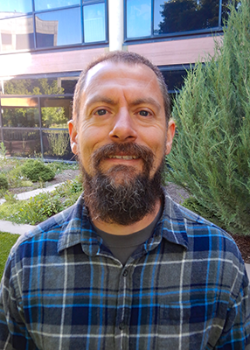Increased Enrollment for Forest Ecology and Management

Increase in enrollment shown over time. Credit: Shelly Kotynek
Forests cover roughly 30 percent of Earth’s land surface, just over 4 billion hectares. Though forests may vary from one another, they all play a vital role in the ecosystem. Forests provide species habitat, clean water, carbon storage, decreased soil erosion, climate control, and oxygen. They support economies by providing wood products and fuels. As human population and the wildland urban interface continue to grow, so does the need for forest management. Forest management allows for hazardous fuel reduction, maintenance of forest health, eradication of invasive insects and pathogens, and ecological restoration. It ensures that forests will be around for generations to come.
Utah State University (USU) offers a major that focuses on the management and ecology of forests. Through this program, students gain the knowledge required to properly manage forests. Since 2017, USU has seen a steady increase in enrollment in the Forest Ecology and Management (FEMA) major. Since 2014, there has been an overall growth, with only one year showing a decline. While multiple factors contribute to this growth, the addition of three faculty members (Dr. Jim Lutz, Dr. Larissa Yocom, Dr. Justin DeRose) and their efforts to increase awareness and generate excitement in this field cannot go unnoticed.

Dr. Jim Lutz
Dr. Jim Lutz joined USU as an Assistant Professor of Forest Ecology in 2013. He earned his M.S. and Ph.D. in Ecosystem Analysis from the University of Washington. Jim’s work focuses on primary, or old-growth, forests and is centered around three ‘Big Plots’. These plots are areas in the forest where a series of measurements are taken, in this case on an annual basis. ‘Big Plots’ are affiliated with the Smithsonian global network of large forest plots. Jim studies how these plots change over time due to climate, fire, and disease, and the causes and consequences of tree mortality. This work contributes to the understanding of western conifer forests, forest ecosystems around the world, and the importance in understanding primary forests. You can learn more about Dr. Jim Lutz and his research by visiting his website.

Dr. Larissa Yocom
Dr. Larissa Yocom came to USU in 2017 as an Assistant Professor of Fire Ecology. She earned her Master’s in Environmental Science from the Yale School of Forestry and Environmental Studies and her Ph.D. in Forest Ecology from Northern Arizona University School of Forestry. Larissa is interested in fire ecology and management, and her current research is focused on fire severity, fuel (combustible plant material) treatment efficacy, and post-fire regeneration. Among her projects, one has her collaborating with Dr. R. Justin DeRose to measure aspen’s ability to reduce fuel loading and fire spread.

Dr. R. Justin DeRose
Dr. R. Justin DeRose, an Aggie Alumni, returned to USU in 2019 as an Assistant Professor in Silviculture and Applied Forest Ecology. He earned his M.S. in Forestry at University of Maine, and his Ph.D. in Ecology at Utah State University. He is currently part of a project funded by the United States Geological Survey Southwest Climate Science Adaptation Science Center (with colleagues from the University of Arizona) to use forest inventories performed by the Navajo Nation and associated tree-ring data to assess forest vulnerability on the Navajo Nation forest land. The goal is to model which forest types are most vulnerable and whether specific types of management can help. He and his colleagues also plan to begin building a Forest Vegetation Simulator (a forest growth simulation model) specific to the Navajo Nation. Dr. DeRose is also currently working on two aspen-related projects that are focused on monitoring and measuring aspen decline in southern Utah, and measuring response to large-scale aspen regeneration treatments, their efficiency, and their ability to reduce fuel loading and fire spread. His primary research program is focused on partitioning the effects of stand dynamics, species, competition, and climate on growth variability, measured in tree rings, for the forest types common in Utah (mixed-conifer, spruce-fir, Douglas-fir, lodgepole pine, and aspen). Most of these types exhibit a very minimal response to climate variability and change, so being able to attribute their response to climate change vs other processes will improve forest management approaches to adaptation. You can learn more about Dr. R. Justin DeRose and his many research projects by visiting his website.

